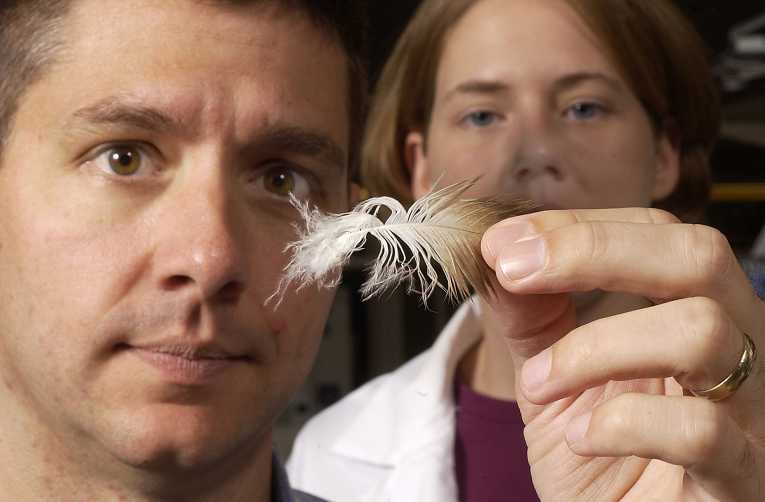Photo Credit: Purdue University. Andrew DeWoody, (left), used DNA from eagle feathers to get more accurate counts of eagle populations that may be used for better conservation of the birds.
Working out just how rare an endangered species is is a tricky business. By definition rare animals are difficult to find; tagging is often impractical or too intrusive; and even experts will struggle to distinguish one Kazakh imperial sea-eagle from another. So conservationists have long relied on simple observation, and basic sampling theory, to help guess at numbers in a particular area. That may be about to change, with geneticists applying their DNA sampling skills to more precisely define populations - and so better inform conservation decisions.
A group of scientists, led by Purdue University's Andrew DeWoody, a professor of genetics, were called in to help Kazakh conservationists - at Narzum National Nature Reserve - to count the resident eastern imperial eagle population. Both these, and the white-tailed sea eagles, are threatened with extinction in Europe, and classed as 'vulnerable' in Kazakhstan. But in order to decide which areas to focus conservation efforts on, it is important to know how many eagles are living in each.
DeWoody explained the problem, in the journal Animal Conservation, ''A biologist doesn't always see them coming and going. Eagles are difficult to capture, mark and re-sight. Biologists in the field can't differentiate individuals, whereas by a genetic fingerprint geneticists can differentiate among individuals that have visited a site.''
The team took an indirect approach to the problem, by collecting feathers from across roosting and nesting sites. They then extracted DNA from the feathers, and sequenced them, to identify the number of unique DNA footprints of individual birds. What they found was that the biologist's traditional modeling methods had significantly under-estimated the population. 414 individual DNA profiles were identified, which was over twice the headcount put on the eagles previously at Narzum.
This means that the Narzum National Nature Reserve is potentially more important for imperial eagle conservation than suspected - and it may merit more attention from conservationists. Team member Todd Katzner, assistant professor at the University of West Virginia, said that ''We knew it was an important site for eagles, but we seriously underestimated its importance.''
The same approach could be used for a variety of animals that are being pressed towards extinction, by the twin threats of human pressure and climate change. Repeated sampling could even help describe the evolution of populations through time, and so enable conservationists to get a better feel for how their efforts are influencing species they are tasked to preserve.










